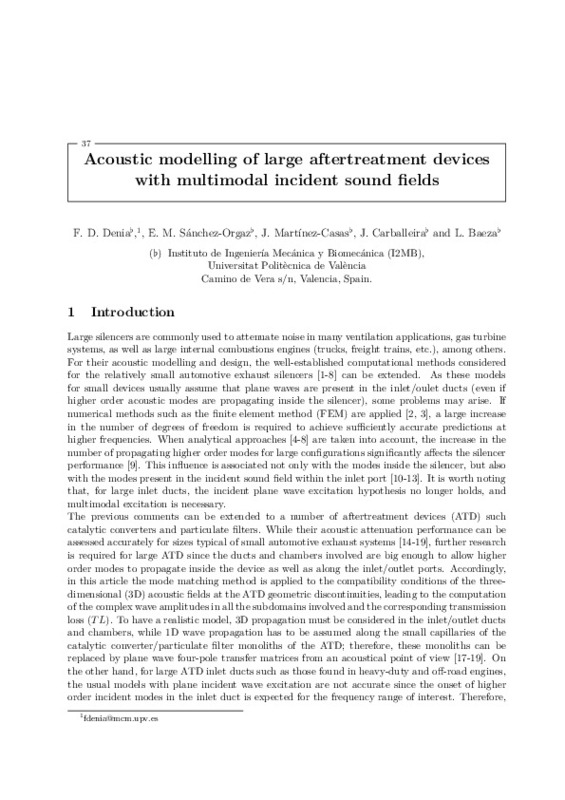JavaScript is disabled for your browser. Some features of this site may not work without it.
Buscar en RiuNet
Listar
Mi cuenta
Estadísticas
Ayuda RiuNet
Admin. UPV
Acoustic modelling of large aftertreatment devices with multimodal incident sound fields
Mostrar el registro completo del ítem
Denia, FD.; Sánchez-Orgaz, EM.; Martínez Casas, J.; Carballeira, J.; Baeza González, LM. (2021). Acoustic modelling of large aftertreatment devices with multimodal incident sound fields. Universitat Politècnica de València. 208-215. http://hdl.handle.net/10251/190556
Por favor, use este identificador para citar o enlazar este ítem: http://hdl.handle.net/10251/190556
Ficheros en el ítem
Metadatos del ítem
| Título: | Acoustic modelling of large aftertreatment devices with multimodal incident sound fields | |
| Autor: | ||
| Entidad UPV: |
|
|
| Fecha difusión: |
|
|
| Resumen: |
[EN] The influence of multimodal incident sound fields on the acoustic behaviour of large aftertreatment devices (ATD) is analysed in detail. The mode matching method is applied to the compatibility conditions of the ...[+]
|
|
| Palabras clave: |
|
|
| Derechos de uso: | Reserva de todos los derechos | |
| ISBN: |
|
|
| Fuente: |
|
|
| Editorial: |
|
|
| Versión del editor: | https://imm.webs.upv.es/jornadas/2022/past_editions.html | |
| Título del congreso: |
|
|
| Lugar del congreso: |
|
|
| Fecha congreso: |
|
|
| Código del Proyecto: |
|
|
| Agradecimientos: |
|
|
| Tipo: |
|







